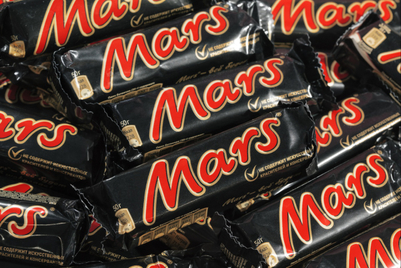
Background and aim
When the Chinese experience any nasal discomfort from allergies, 55 percent of sufferers in the market don't seek any treatment, while the rest (45 percent) will either see doctors or treat themselves, according to GSK stats.
Among self-treaters, only 11 percent will choose a nasal spray versus other over-the-counter (OTC) medication options like antihistamines or decongestants. Because of these limitations and also inconsistent allergy incidences, GlaxoSmithKline's nasal spray Flixonase has been struggling to reach its sales targets in China.
Last year, the brief given to its China media agency Mediacom remained the same as previous years: to broaden Flixonase's existing user base, as only 1.3 percent of all Chinese people are Flixonase users; and to convert users of oral antihistamines into Flixonase ones.
The unpredictable nature of allergies makes targeting potentially 300 million sufferers in China on a limited budget immensely challenging. Allergies get triggered at different times of the year. Moreover, once consumers make a nasal spray choice, it is hard to get them to switch because "they don’t know what they don’t know"– namely, the brand message of 'Flixonase is actually more effective in relieving allergy symptoms', said Dan Hui, general manager of Mediacom Beijing.
Additionally, sales for GSK competitors were on the rise due to price cutting and effective advertising, while communicating via mass-media channels to drive awareness was no longer efficient.
The brand wanted to "identify a new, untapped audience which would allow us to stand out from the competition instead of fighting them head on", according to Sandy Ma, media director for Greater China at the British pharma brand.
Back in 2013, GSK said it was one of the first healthcare brands in China to venture into ecommerce and set up online flagship stores, said Hui. Come 2016, when it became clear that China was leading ecommerce globally, the company saw branding potential on ecommerce platforms and chose not to follow traditional views of ecommerce being purely for sales.
Combined with the rapid growth in OTC pharmaceuticals through ecommerce in the mainland, GSK realised this could be the chance to achieve greater visibility for Flixonase using such data.
Execution
As a test, Mediacom claimed to be able to dig into Alibaba's 400-million strong customer base, under its privacy guidelines, at the unique ID level which represents people, not cookies.
This enabled Mediacom to track down individuals who had browsed either Flixonase’s or competitors’ webpages during the past six months before October last year, when prepping for the activation.
Via Alimama, the marketing services and data arm of Alibaba, Mediacom got more insight into buying behaviour for other products, as well as historical browsing patterns and content consumption habits within the Alibaba ecosystem, giving a glimpse into their wider lifestyle choices through actual (not claimed) actions.
The agency then identified three pools of individuals who can be reached in a new campaign:
- Previous Flixonase customers – 20 percent
- Customers of competitors (such as Clarityne and Hismanal) – 20 percent
- Family health carer – 60 percent
The last segment was a new-found audience that Mediacom had not been able to identify, let alone reach or communicate with before.
Additionally, Mediacom conducted an online survey on Aliwangwang, an instant-messenging tool between buyers and sellers on Taobao, with 2 million respondents, out of which more than 3600 gave valid answers.
"This was one of the highlights of this case that got us a relatively comprehensive consumer research report," said Hui. "This confirmed the high potential of this new 'health carer' segment."
In a short campaign between 12 to 25 October last year, Mediacom then created relevant content for each Alibaba ID that fit the three target segments. The agency took pains to emphasise that they were not targeting device cookies which could lead to wastage through duplication, but individuals regardless of whichever device they held.
An Alimama media targeting product called 'Brand Radar' allowed Mediacom to include flagship store visits (207,322 in the 14-day campaign period) and visitor actions in real-time tracking. This permitted Mediacom to optimise media investment across the various stages of the consumer journey.
Hui pointed out this is GSK's first "100-percent automatic campaign” where mapping and targeting are done automatically with software instead of through humans. "We tested different creatives and put more budget behind the best performing combinations," she said, in a case study document.
Results
According to GSK, sales in the 14-day campaign period eventually tripled, compared to a regular period between 12 to 31 August. (September data was disregarded due to technical issues.)
98 percent of new Flixonase purchases were apparently made by completely new customers who had not previously browsed, searched for, saved as 'favourite' or bought Flixonase in the last six months. Also, 65 percent had never bought a nasal spray before.
Over one-third of the new purchasers were from the newly-defined 'family health carer' group—a new source of growth for GSK's nasal spray business. "This group responded very well to our messaging, as measured not only by sales results, but also delivered higher-than-average CTR," said Hui. "Their reactions were very close to our core users [actual allergy sufferers] and gave us confidence that this is a long term opportunity for Flixonase."
The media budget behind these results was below US$1 million, according to Mediacom.
"We have seen a nearly linear, not the usual diminishing, conversion rate across our key brand health metrics," said Hui. "In 14 days, we increased top-of-mind awareness, preference and purchase intent by 31, 30 and 29 percentage points respectively." However, there was no significant impact when it comes to recommending Flixonase to others.
Subsequently, thanks to the overall success of the test, GSK's consumer health division in China signed a memorandum of understanding (MOU) with Alibaba in June 2017 to explore a new marketing model involving extensive integration of resources throughout the whole sales and marketing value chain.



.jpg&h=334&w=500&q=100&v=20250320&c=1)


.jpg&h=334&w=500&q=100&v=20250320&c=1)
.jpg&h=334&w=500&q=100&v=20250320&c=1)


.png&h=334&w=500&q=100&v=20250320&c=1)







.png&h=268&w=401&q=100&v=20250320&c=1)

